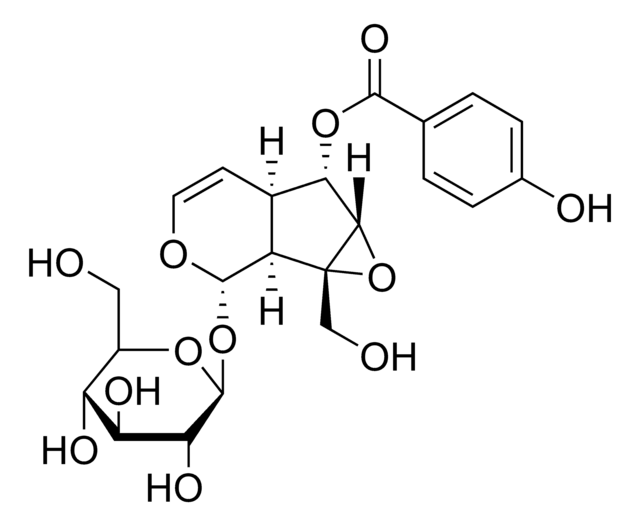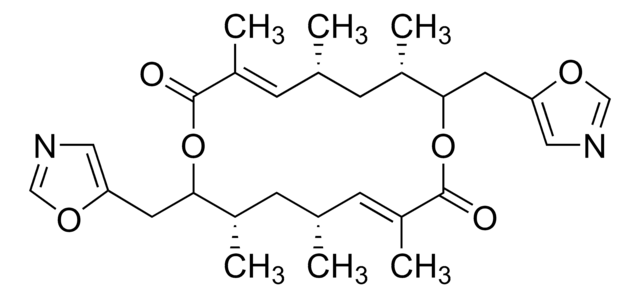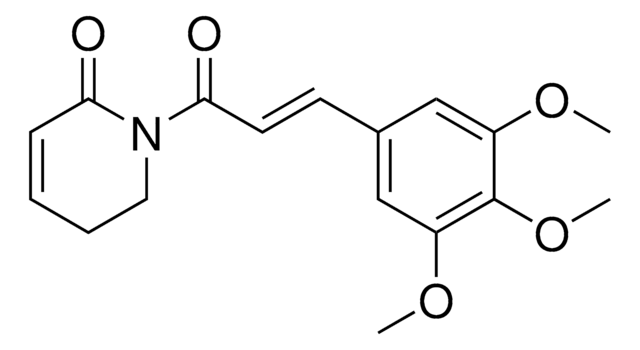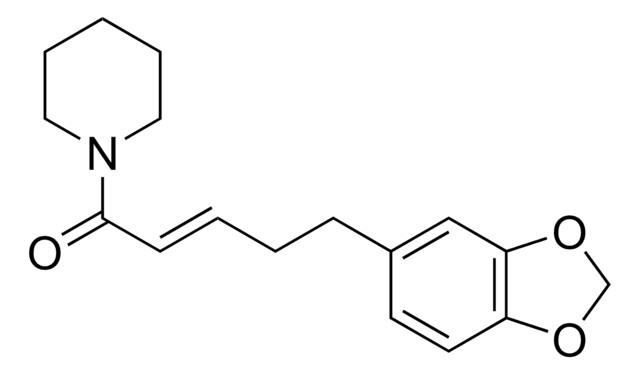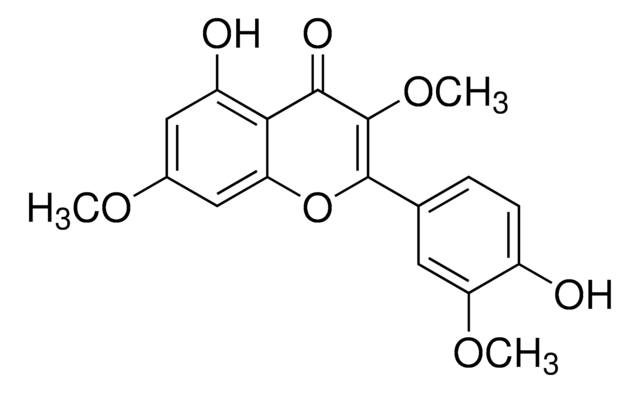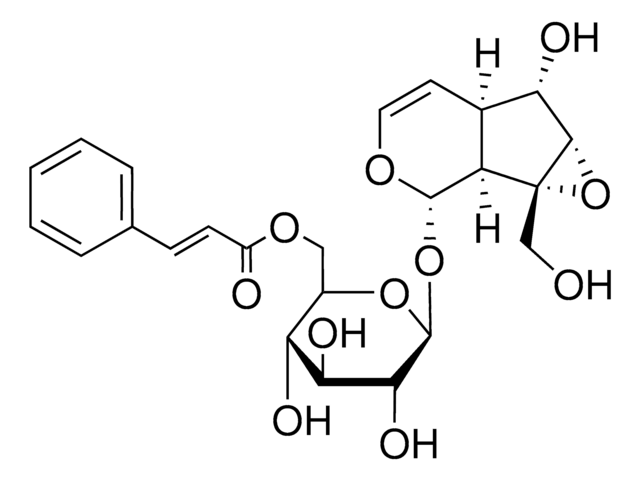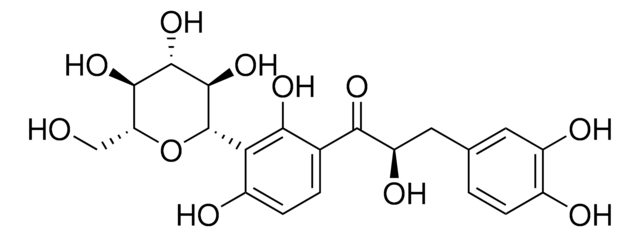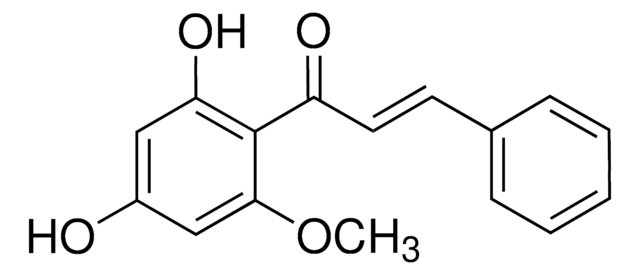SMB01055
Colladin
≥90% (LC/MS-ELSD)
Synonyme(s) :
Coladin
About This Item
Produits recommandés
Source biologique
plant
Essai
≥90% (LC/MS-ELSD)
Forme
solid
Poids mol.
424.53
Solubilité
water: slightly soluble
Application(s)
metabolomics
vitamins, nutraceuticals, and natural products
Température de stockage
−20°C
Chaîne SMILES
O1c2c(ccc(c2)OC[C@H]3[C@]4([C@@H](C([C@@H](CC4)OC(=O)C)(C)C)CCC3=C)C)C=CC1=O
InChI
1S/C26H32O5/c1-16-6-10-22-25(3,4)23(30-17(2)27)12-13-26(22,5)20(16)15-29-19-9-7-18-8-11-24(28)31-21(18)14-19/h7-9,11,14,20,22-23H,1,6,10,12-13,15H2,2-5H3/t20-,22-,23-,26+/m1/s1
Description générale
Application
Actions biochimiques/physiologiques
Caractéristiques et avantages
- High quality compound suitable for multiple research applications
- Compatible with HPLC and mass spectrometry techniques
Autres remarques
Code de la classe de stockage
11 - Combustible Solids
Classe de danger pour l'eau (WGK)
WGK 3
Point d'éclair (°F)
Not applicable
Point d'éclair (°C)
Not applicable
Faites votre choix parmi les versions les plus récentes :
Certificats d'analyse (COA)
Désolés, nous n'avons pas de COA pour ce produit disponible en ligne pour le moment.
Si vous avez besoin d'assistance, veuillez contacter Service Clients
Déjà en possession de ce produit ?
Retrouvez la documentation relative aux produits que vous avez récemment achetés dans la Bibliothèque de documents.
Notre équipe de scientifiques dispose d'une expérience dans tous les secteurs de la recherche, notamment en sciences de la vie, science des matériaux, synthèse chimique, chromatographie, analyse et dans de nombreux autres domaines..
Contacter notre Service technique